Fitbit Blaze Review
Fitbit Blaze Review
Part smartwatch, part fitness tracker
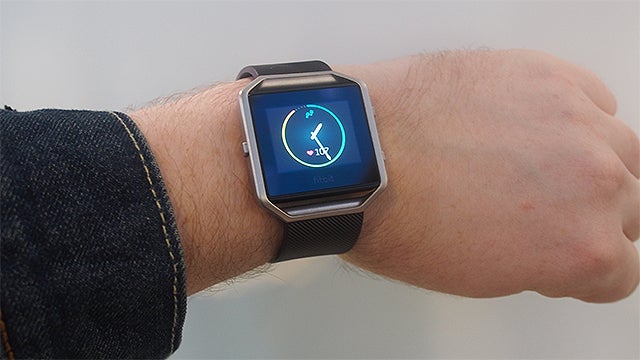
Verdict
Pros
- Colour screen is a nice touch
- Good battery life
- Reliable exercise tracking
- Multiple strap options
Cons
- No inbuilt GPS will be a pain for runners
- No third party notification support
- Not water resistant
Key Specifications
- Review Price: £159.99
- Multiple strap options
- PurePulse Heart Rate monitoring
- Five day battery life
- 1.2-inch. 240x180-pixel colour screen
- iOS and Android support
What is the Fitbit Blaze?
The Fitbit Blaze is being marketed as the ultimate “smart fitness watch”. What that means in layman’s terms is that this is Fitbit’s attempt to create an all-in-one wearable that can offer robust fitness tracking, as well as basic smartwatch functionality. It’s a move that’s been embraced by many wearable manufacturers.
At first glance, the Blaze looks like a not-so-attractive cross between the Apple Watch and Fitbit Surge. However, following a few weeks of having it wrapped around my wrist, I found plenty to like about the Blaze, and I can see that it could be a solid – albeit pricey – option for casual runners and those just getting into exercising.
Since launching the Blaze, Fitbit has also unveiled the Fitbit Versa. This is smaller, more design=focussed watch that doesn’t boast GPS.
Related: Fitbit Ionic review
Fitbit Blaze – Design
The Blaze looks more like a smartwatch than a fitness tracker. It has a 1.2-inch, detachable 240 x 180-pixel colour screen, metal frame and rubber textured strap. The strap in particular will be familiar to owners of previous Fitbit devices.
Related: Best Fitness Tracker
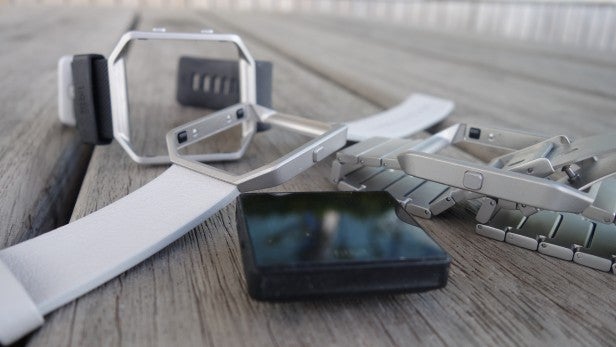
Like the Apple Watch, the 1.2-inch size of the Blaze means that it’s small enough to sit unassumingly on its user’s wrist, while being large enough to use without having to squint at on-screen text.
Those who wish doll up the device can do so by taking advantage of the Blaze’s numerous customisation options. For starters, you can choose from classic “Luxe leather” and “Luxe metal” strap types. You can also choose from a variety of digital watch faces and metal cases for the central tracker unit.
For convenience, and the fact that I’m too lazy to switch straps, I spent the majority of my time using the classic band. However, on the rare occasion I switched this for the Luxe metal strap, I had numerous folk stop and comment on the watch’s looks. On one occasion, a non-tech-savvy friend even mistook it for an Apple Watch.
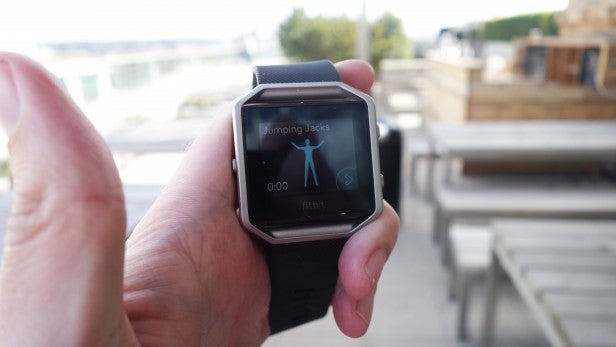
The colour screen, too, is a feature that differentiates the Blaze from Fitbit’s previous trackers. Past and current Fitbit wearables, such as the Surge and Charge 2, have had basic monochrome displays that have at best proven functional.
The move to colour makes a big difference. Although the Blaze doesn’t feature the stellar AMOLED screen tech seen on competing fitness-focused smartwatches – the Microsoft Band 2, for example – colours are suitably rich and make it easier to read information on the watch.
This is helped further by the fact that Blaze’s custom UI displays data in colour-coded segments, differentiating key bits of data such as your step count and heart rate. The 240 x 180-pixel resolution also ensures that icons and text are generally sharp enough to read comfortably.
Fitbit Blaze – Tracking and Software
My only serious criticism about the Blaze’s design is that it steps too far into smartwatch territory, and as a result makes a few too many compromises on the sports side.
The Fitbit Blaze feels far more like a hybrid device than a dedicated sports tracker. Testing it took me back to my time with the Motorola Moto 360 Sport, which generally suffered the same issues.
For starters, the Blaze isn’t waterproof. It can survive a run in the rain, the odd accidental splash and sweat without issue, but Fitbit recommends that you don’t wear the Blaze in the shower, nor whilst swimming.
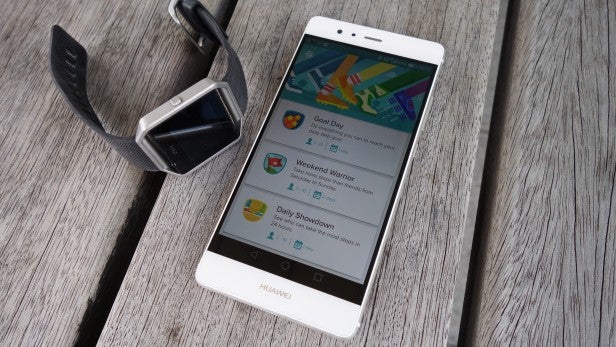
This is a pain considering its focus on being a device that you wear 24/7. After a few runs with the classic band attached, I found myself having to wipe down the unit and give it a sprucing with Febreze to avoid drawing any unwanted attention whilst wearing it on my commute to work.
It also doesn’t have a dedicated GPS built into it, so if you want accurate location and distance data, you’ll have to pair the Blaze to your smartphone and carry it with you when out running or cycling. This will be an annoyance for fitness fans – myself included – who prefer to keep what they’re carrying to a minimum when exercising.
Related: Fitbit Charge 2 review
For more casual joggers, or those just getting started on a fitness regime, the Blaze is one of the easiest-to-use trackers/smartwatches I’ve tested.
Except for the lack of GPS, the Blaze ticks many boxes and comes loaded with a 3-axis accelerometer, optical heart-rate monitor, altimeter and ambient light sensor. It’s also cross-platform, working with both Android and iOS devices.
The setup process is a doddle: I simply had to charge the Blaze using the provided proprietary connector and download the Fitbit app onto the smartphone I was using. From there I had to turn on Bluetooth and follow a series of on-screen prompts to get the phone and Blaze on speaking terms, after which I was good to go.
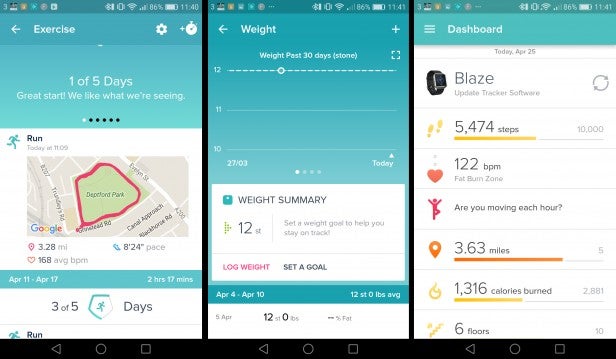
The process is one of the simplest and smoothest I’ve encountered, and is in stark contrast to my experience with the Jaybird Reign I reviewed before it.
The Blaze runs its own proprietary software, which is completely different to most smart – and sport – watches. Apps are accessed by swiping left from the watch homescreen. Services on offer are limited to those provided by Fitbit; there’s no third-party store ecosystem, as there is on most full-on smartwatches. This means you’re limited to Exercise, Settings and Smart Alarm and FitStar services.
The Exercise section includes tracking for all the usual exercises you’d expect, including running, cycling and weights. Fitbit claims the Blaze can auto-detect changes in activity and track multiple exercise workouts – a session where you switch from cycling to running mid-exercise, for example. But I found I achieved the best results when I manually told the device to start tracking specific activities.
With the Fitbit paired to my smartphone, tracking is fairly accurate. Running it head-to-head against the Microsoft Band 2 and Basic Peak, the difference in my final step count day to day was never more than 10-20 out.
The same remained true when I compared heart rate readings. Running whilst wearing all three devices returned a heart-rate reading that remained consistent between the three.
I also didn’t notice any odd anomalies, similar to those I’ve seen when using the Basis Peak for sleep tracking. On occasion, the Basis Peak showed that I’d suffered massive coronary episodes during the night, which, considering my continued presence in the world, very clearly didn’t happen.
Paired with my phone, the Blaze also tracked distance reasonably well. Running around a track that I know is roughly 5km long, the Blaze never threw up any serious inconsistencies and generally matched the numbers recorded by the Basis Peak and Band 2.
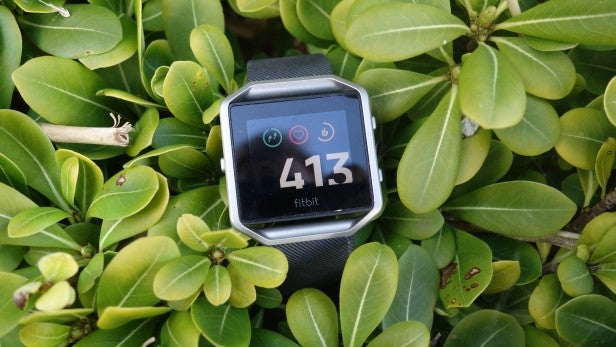
Data is presented on the Blaze’s screen via the Today app. For a more detailed look at you data, you’ll have to use the Fitbit smartphone app.
Fitbit has brought Breathe exercises to the Fitbit Blaze, like the Charge 2. These are guided breathing exercises designed more for well-being than fitness. It’s a way to take a bit of time out of your day to relax. Stress can, after all, have a major impact on your health.
The Fitbit app remains a key selling point for the Blaze. At a basic level, the app offers all the key information most people need, such as the number of steps taken, calories burned, and time slept. It also offers the usual breakdowns of specific workouts, such as your average heart rate, distance travelled and speed per mile. What makes it great, however, are the Social and Challenge functions.
A new update to the app brings the aforementioned Cardio Fitness score available on the Fitbit Charge 2. This is a way of measuring your overall fitness and is based around the VO2 Max test. This looks at the maximum amount of oxygen your body uses during exercise and you get a measurement against similar people of your gender and age. It’s a useful way to measure progress.
The Fitbit app has a Friends session, which allows you to view how those in your contacts also using Fitbit are getting on. This may sound insignificant, but I found the feature a huge motivator that encouraged me to go running more regularly. Admittedly, this is mainly down to my pride, and a refusal to let a 50+ relative achieve a better run time than me, but it’s cool nonetheless.
The challenges adds a further element of competition for those who want to push themselves and their friends. The setting lets you send specific challenges to friends via the Fitbit app. Most of them aren’t too taxing, and centre around simple activities such as meeting daily steps goals, but I can definitely see this feature appealing to folk just starting out in getting fit.
Then there are the Adventures. These are virtual guided walks, which will appeal for those who need the extra motivation but don’t necessarily have a competitive streak. Adventures include the New York City marathon and Yosemite Park, with more coming in the future. By reaching certain step goals, you’ll pick up facts and ‘treasures’ along the way, as well as photographs of the location you can view by tilting your phone.
FitStar is another selling point for those just getting into exercising. It’s a custom feature that aims to help Blaze owners start and stick to work out regimes. Updates to the app now also bring recommended routines based on your activity level and an expanded library of bodyweight and cardio exercises, led by two certified personal trainers.
The app comes with a number of preconfigured workouts that run you through a series of different exercises over a set period of time. Exercises on offer include everything from squats and pushups to more esoteric challenges, such as cat and cows – which are as weird and awkward to do in public as they sound.
The cool part is that the app provides instructions on how to do each exercise via a series of on-screen graphics, which makes it easy for anyone – not just fitness fanatics – to start building up their core strength and stamina.
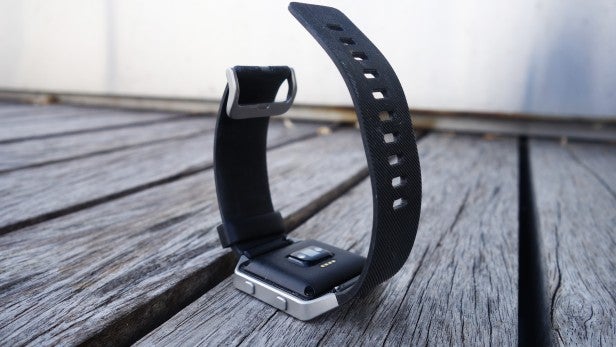
Fitbit Blaze – Smartphone features
While the fitness tracking features are fine for casual exercisers, I was a little less impressed by the Blaze’s supposed “smart” features.
On paper, the Blaze will push alerts for incoming calls and messages and upcoming events in your calendar when paired to a smartphone. You can also set it to control your phone’s music player. Initially, I found that the alerts worked pretty well, but over time I experienced a few annoying bugs.
The notifications don’t always appear at the correct time, if at all. Calls came through successfully, but calendar alerts in particular were hit and miss. Alerts from my calendar would regularly appear either after I’d already addressed them on my main phone, or several hours later.
The fact that the Blaze looks and behaves so much like a smartwatch also left me wishing that the notifications were a little more advanced. After a week with the Blaze I found myself hankering after ways for it to push alerts from key third-party apps, such as WhatsApp, Facebook and Twitter, as you can on any Android Wear smartwatch, or the Apple Watch.
Fitbit Blaze – Battery life
Battery life is one area in which the Blaze excels. Other colour screen smartwatches and fitness trackers I’ve tested, such as the Moto 360 Sport and Microsoft Band 2, struggle to offer more than two days use on a single charge.
The Fitbit Blaze is an absolute trooper by comparison. Fitbit quotes the Blaze as offering five days of battery life from a single charge. In my fortnight-plus of testing the Blaze, it’s has matched Fitbit’s quoted life with moderate use. Moderate use entailed tracking my daily morning run and checking the time and incoming alerts throughout the day – with screen brightness in its middle setting.
That puts it on a par, if not above, a number of screenless fitness trackers I’ve tested – the Jaybird Reign, for example. My only issue with the Blaze’s battery is that it can only be charged using a proprietary dock.
Related: Best Smartwatch
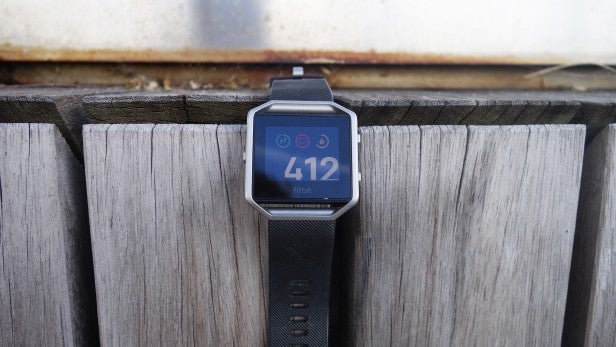
Should I buy a Fitbit Blaze?
If you’re a casual runner, or someone just getting into exercising, the Fitbit Blaze is a reasonable choice. The FitStar service and social element of the Fitbit app are nice touches that will help newbies start and stick to an exercise regime.
The Blaze’s colour screen and wealth of customisation options also make it also one of a select few trackers that I’m happy to wear all day. The added notifications will also likely appeal to some casual buyers looking for basic smartwatch functionality.
However, the Blaze isn’t for fitness fanatics. The lack of built-in GPS will annoy runners and the fact that it isn’t waterproof will be an issue for those who swim regularly, and those who like to wear their tracker in the shower after a workout. Unfortunately this is a complaint levelled at all of Fitbit’s trackers save for the new Fitbit Flex 2.
At £159.99, it’s also seriously expensive. The Garmin Vivosmart HR Plus is around the same price but packs in far more exercise-friendly features, such as built-in GPS. If you’re only after a basic fitness tracker, consider the Moov Now or Basis Peak.
Verdict
The Fitbit Blaze is competent fitness tracker for casual users, with a few smartwatch functions bolted on.


